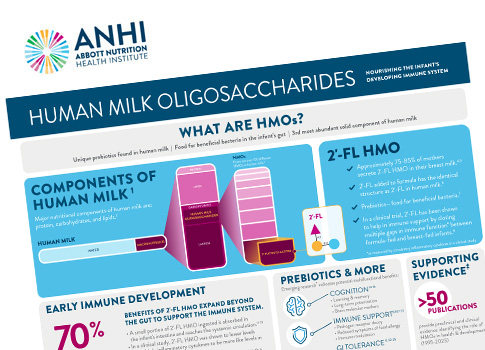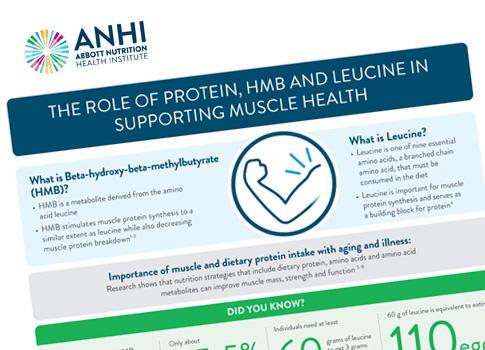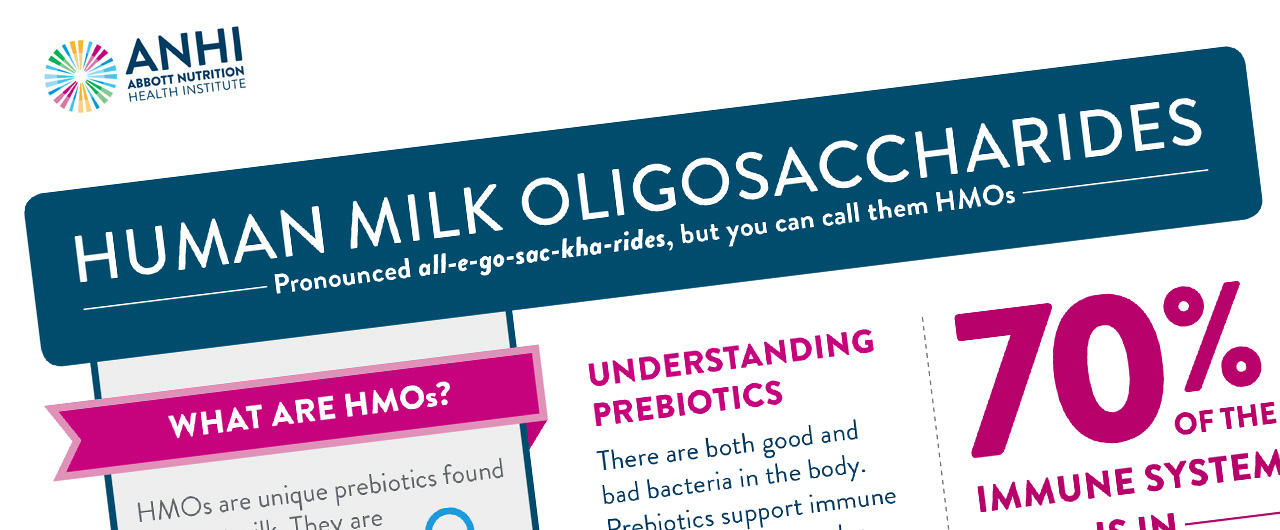Human Milk Oligosaccharides (HMOs): Nourishing the Infant’s Developing Immune System
This human milk oligosaccharides (HMOs) infographic shows preclinical and clinical evidence identifying the role of HMOs in neonatal health and development.

The Role of Protein, HMB and Leucine in Supporting Muscle Health
This infographic highlights the role of leucine and its metabolite HMB in supporting muscle health in aging and illness.

ASSOCIATIONS OF EARLY NUTRITION WITH GROWTH & BODY COMPOSITION IN VERY PRETERM INFANTS: A PROSPECTIVE COHORT STUDY
This study investigated the impact of early postnatal macronutrient intakes on growth and body composition of 133 preterm infants within the first 6 months. The authors concluded macronutrient intakes during the first month of life have impacts on growth and body composition before 6 months of age. Higher daily protein intake is associated with a better growth and healthier body composition for VPT/VLBW infants.

RECENT ADVANCES IN INFANT NUTRITION: HUMAN MILK OLIGOSACCHARIDES
This narrative review aims to summarize the current knowledge toward HMOs and update the clinical experience and evidence of HMOs on infant health. Breast feeding and human milk are the standards for infant feeding and nutrition. HMOs are one of the major differences between human milk and formula milk. Currently available evidence demonstrates their various beneficial effects toward infants’ health. HMOs serve as decoy receptors that prevent the attachment of pathogens to epithelial cells to protect against infectious disease. HMOs modulate host intestinal epithelial and immune cell responses. Breast milk feeding remains the best option for infants nutrition and development. However, when breast milk is not adequate or available, infant formula supplemented with HMOs may be considered as an alternative.

THE UNDERAPPRECIATED ROLE OF LOW MUSCLE MASS IN THE MANAGEMENT OF MALNUTRITION
This opinion article, published in Journal of American Medical Directors Association (JAMDA), addresses the role of muscle mass in improving health outcomes in a variety of disease states. It also offers strategies you can use to help patients manage low muscle mass and prevent muscle loss.

Implications of Low Muscle Mass Across the Continuum of Care: A Narrative View
This narrative, published in the 15 November 2018 issue of The Annals of Medicine, provides an overview of the implications of low muscle mass on healthy outcomes for patients in inpatient, outpatient and long-term care clinical settings.

Dialogue Proceedings: Advancing Patient-Centered Malnutrition Care Transitions
Lack of sufficient malnutrition recognition and care across settings of care means patients are frequently at risk for developing negative health outcomes related to malnutrition, including increased risk of chronic disease, frailty, falls, and loss of independence. A multi-stakeholder group of health and community leaders and advocates came together on 14 March 2018 for a national Dialogue to focus on developing real-world solutions to better integrate nutrition risk identification and care into existing care transition pathways and accountable care models.

Calorie Replacements: A Useful Tool to Support a Diabetes Weight Management Plan
The diabetes pandemic continues to grow in every country in the world. Although estimates vary slightly, full-blown diabetes is believed to afflict as many as 382 million adults worldwide. By 2035, that number is expected to rise to 592 million. Besides contributing to hundreds of thousands of deaths, poorly controlled diabetes can impair the function of heart, kidneys, eyes, and nerves and lead to cardiovascular disease, stroke, high blood pressure, nephropathy, blindness, neuropathy, and amputation.



